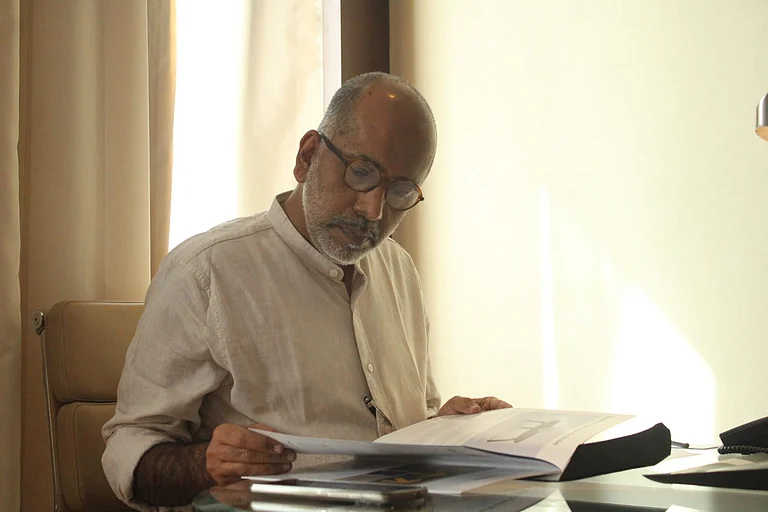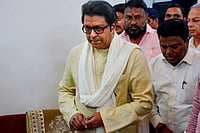Former Japanese Prime Minister Shinzo Abe was assassinated on Friday when he was giving an election speech in Western Japan's Nara.
Abe was airlifted to a hospital after he was shot but he could not be saved. The death was announced hours after he was shot.
Authorities have taken the suspect in custody, identified as 41-year-old Tetsuya Yamagami. His home has been raided, where authorities found several homemade weapons similar to the one used in shooting Abe, according to The Guardian.
Here is all we know about the man who assassinated Abe, his possible motive, and findings so far in the investigation.
Who is Tetsuya Yamagami?
Tetsuya Yamagami, 41, is the suspect arrested for shooting and killing former Japanese Prime Minister Shinzo Abe.
Yamagami is a former member of Japanese Navy, who left service in 2005, according to The Guardian.
The Japan Times reported that Yamagami did not seem to be politically active, citing a source from his former company. It added that Yamagami attended a public high school in Nara and wrote in his graduation yearbook that he "didn’t have a clue" what he wanted to be in the future.
The Japan Times further reported, "There had been no reports of trouble from the manufacturer [where Yamagami worked]. But in April this year, Yamagami told the dispatch company that he wanted to quit because he was 'tired, and he left the job the following month."
The investigation so far
The police chief of Nara, where Abe was killed, said, "We are conducting forensics, but clearly it [the gun used] looks homemade."
The AP cited Japanese police as saying that the gun was about 15 inches long.
Multiple weapons that appeared to be homemade were recovered from Yamagami's home in a raid, reported NBC News.
The AP also reported that authorities also confiscated Yamagami's personal computer.
Such improvised firearms, also known as zip guns, are not complicated to construct and require parts that can be easily bought and ingredients to make homemade gun powder, reported NBC News quoting John DeCarlo of University of New Haven.
"You can build a go-kart in lieu of a car pretty easily using bastardized parts. It's the same with guns," said DeCarlo, a professor of criminal justice and former chief of police in Branford, Connecticut.
He added that instructions to make zip guns are accessible online.
The motive for shooting Abe
The Guardian reported Yamagami told police that he believed Abe was part of a "specific organisation" that he had a grudge against. The police would not reveal the name of the organisation.
The AP reported the police as saying that Yamagami was responding calmly to questions and had admitted to attacking Abe, telling investigators he had plotted to kill him because he believed rumours about Abe's connection to a certain organisation that they would not identify.
Yamagami has denied he committed the crime because he was opposed to Abe's political beliefs, according to the police.
Yamagami also told police that he initially planned to attack a leader of a religious group, reported Kyodo News without identifying this religious leader or organisation.
Security lapse being investigated
The Guardian reported Japanese police as saying that the investigation will include the level of security at the event.
Following Abe's killing, independent experts have highlighted security lapses in Abe's event.
Videos of the shooting show the assassin shooting Abe from behind. Multiple shots were fired and while the first shot appears to have missed Abe, the subsequent shots hit him even as his personal security officers (PSOs) scrambled to his defence but not before the shooter managed to hit Abe.
Journalist Sandeep Unnithan highlighted that there were three seconds between the first shot that missed Abe and subsequent shots that killed him. He pointed out that Abe's PSOs could not open the ballistic shield to protect him from incoming bullets.
Shishir Gupta of Hindustan Times noted that there was no secured perimeter around Abe as attacker was able to get so close to him and his PSOs were not guarding his rear. Rather, Abe's PSOs were looking in the direction of Abe, rather than behind him from where the attacker approached and fired.
Gupta further noted the slow response —which Unnithan also noted— of PSOs and a wrong approach to the shooting.
He wrote, " After the first missed shot, the bodyguards should have blocked the line of fire by bodily protecting the target and escort Abe to safety. Instead, video footage reveals, the guards ran towards the assassin leaving Abe unprotected. This gave the assassin enough time to take the second shot which proved fatal."
(With PTI, AP inputs)













.jpg?auto=format%2Ccompress&fit=max&format=webp&w=376&dpr=2.0)







 and Rahul Gandhi (R)?w=200&auto=format%2Ccompress&fit=max)
.jpg?w=200&auto=format%2Ccompress&fit=max)



